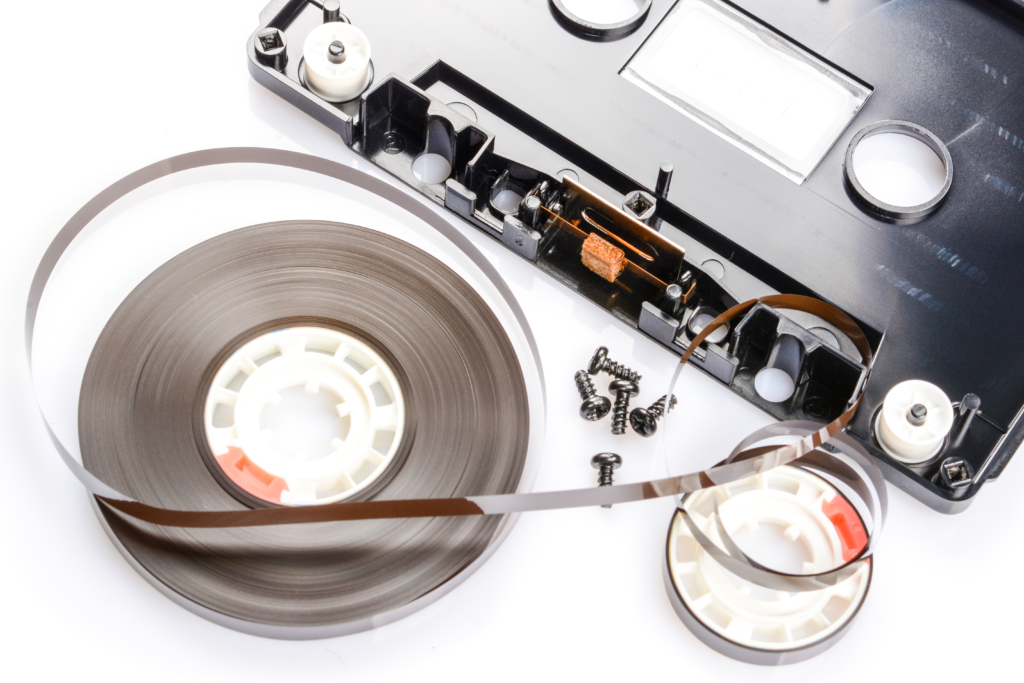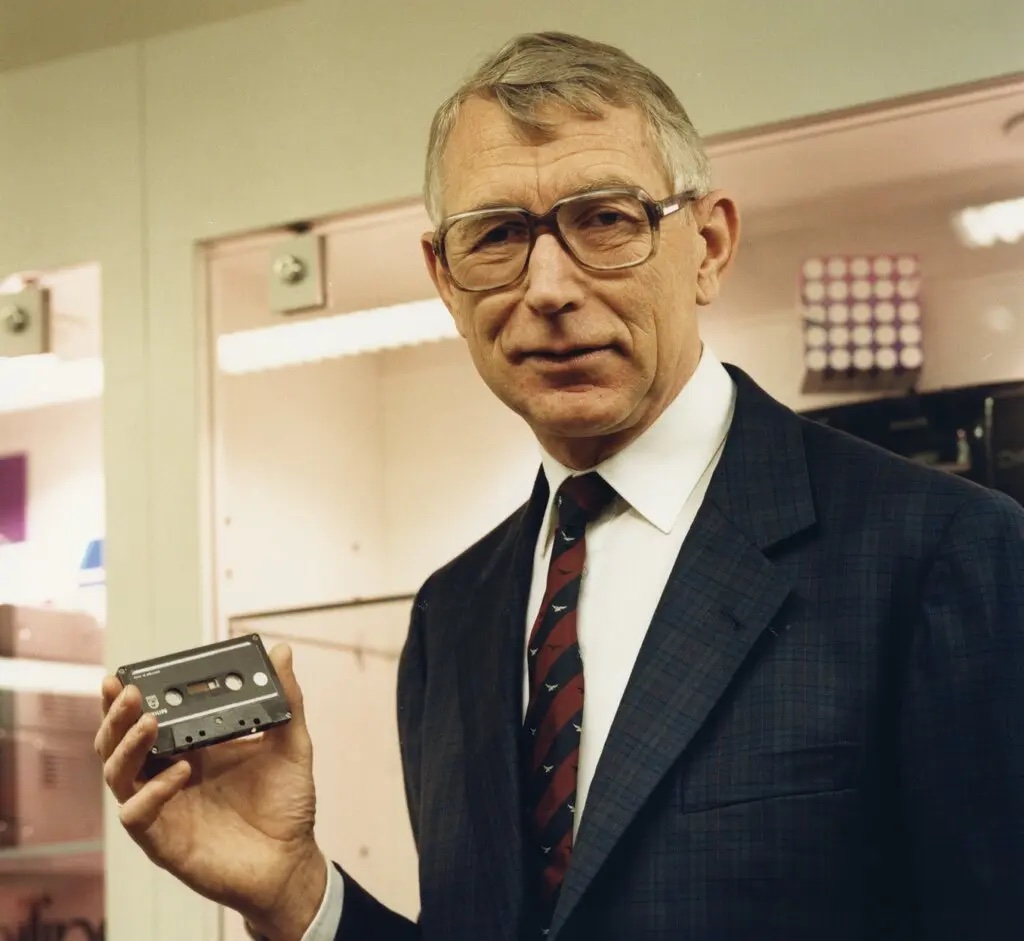The advent of cassette tapes marked a significant milestone in the evolution of audio recording and playback technology. These compact and portable devices revolutionized the way people consumed music, offering convenience and versatility unmatched by previous formats.
In this blog, we’ll be answering the question “When did cassettes come out?”, looking at how they work, and exploring what led to first their popularity, and then, their eventual decline. Read on for all the information you need to know!
How do cassettes work?

First, let’s delve into what cassette tapes are and how they actually work.
A cassette tape consists of a small plastic shell housing two reels of magnetic tape. The tape is coated with a layer of magnetizable material, typically ferric oxide or chromium dioxide, which records audio signals in the form of magnetic fluctuations.
When a cassette tape is inserted into a compatible player, such as a cassette deck or portable cassette player, the reels of tape are engaged by a capstan and pinch roller mechanism. As the tape passes over the playback head, the recorded magnetic signals are detected and converted into electrical signals, which are then amplified and sent to speakers or headphones for playback.
Cassette tapes utilize a continuous loop design, allowing for seamless playback without the need for rewinding. However, users can fast forward or rewind the tape manually to skip to different tracks or locate specific sections of audio.
A brief history of cassette tapes
Now we have an idea of what cassette tapes are and how they work, let’s take a tour through their history, including their rise, fall, and rise again.
The history of cassette tapes traces back to the mid-20th century, marked by the quest for a more convenient and portable alternative to existing audio recording formats. Invented by Dutch engineer Lou Ottens in 1962, cassette tapes were first introduced by electronics company Philips in 1963. Pitched as a solution to the limitations of reel-to-reel tape recorders, the compact cassette, initially designed for dictation purposes, quickly gained traction due to its smaller size, ease of use, and affordability.

The compact cassette format was further popularized by the introduction of the cassette player, or cassette deck which allowed users to playback pre-recorded tapes or record their own audio content. As cassette technology evolved, improvements such as stereo recording, noise reduction systems like Dolby Noise Reduction, and longer tape durations were introduced, enhancing the format’s audio quality and versatility.
By the 1970s, cassette tapes had become the dominant audio format, surpassing vinyl records and reel-to-reel tapes in popularity, with the Sony Walkman being a huge driver of this boom. The portability and durability of cassette tapes made them ideal for a wide range of applications, from personal music collections to educational recordings and professional audio production.
The decline of cassette tapes
Throughout the 1980s and 1990s, cassette tapes reached their peak in terms of market saturation and cultural significance. The format became synonymous with mixtapes, allowing music enthusiasts to curate personalized playlists and share their favorite tracks with friends and loved ones.
Cassette tapes also played a pivotal role in the underground music scene, enabling independent artists and bands to self-release their music without the need for expensive studio production.
However, the rise of digital formats, such as CDs and later digital downloads, marked the beginning of the decline of cassette tapes. By the early 2000s, digital music players like the iPod had surpassed cassette tapes in popularity, leading to a gradual phase-out of cassette production by major music labels. Despite their eventual decline, cassette tapes remain a nostalgic relic of a bygone era, cherished by collectors, audiophiles, and music aficionados alike.

An unlikely comeback
Although cassette tapes found themselves outstripped by later technologies and well on their way to obsolescence, they have been having a surprising resurgence of late. In 2022, cassettes experienced a 20-year high in sales, driven by new releases from a number of giant artists.
In fact, in 2023 there were 436,400 cassettes sold in the US alone. Singer-songwriter and largest musical artist in the world right now, Taylor Swift, has released all of her latest albums on cassette, with her next release set to be no different.

Preserve your cassettes with EverPresent
Only time will tell if this welcoming of cassettes back into the fold will continue but for now, the format is looking stronger than ever. One thing that is certain though is that cassette tapes won’t last forever.
As with all physical media, cassette tapes are prone to degradation over time, especially if they are not looked after properly. Yes, you might have bought the new Taylor album just this year but who’s to say whether you’ll still be able to listen to it 10 years from now?
Well, that’s where EverPresent can help! We’re experts in digitizing the analog audio signals found on cassette tapes into convenient digital formats. This process not only preserves the content in a more durable and accessible form but also allows for easy sharing, editing, and playback on modern devices.
Our team transfers over 10,000 hours of audio tapes, vinyl records, and reel-to-reel cassettes every year. No project is too large or too small for us and we treat each one with the care it deserves. As a family-run business, we know the importance of your memories and handle each tape as if it were our own.
We will transfer your cassettes into high-quality .wav files and even equalize the files to improve playback quality. There are also options to have your files transferred to CD, USB, and non-standard DAT, Mini, or Micro tapes.
Contact us for a free, no-obligation consultation, and start digitizing your cassettes today!

